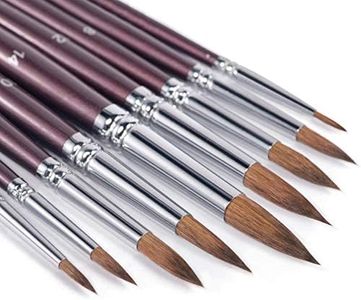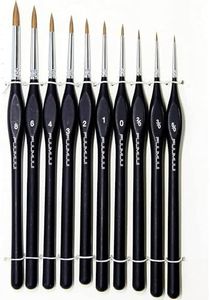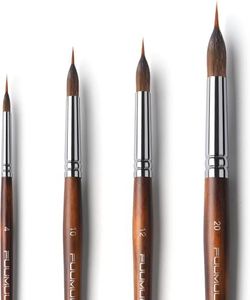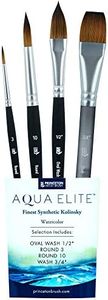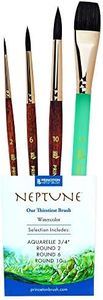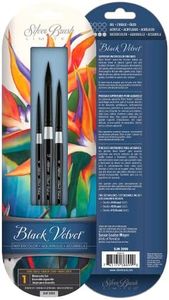We Use CookiesWe use cookies to enhance the security, performance,
functionality and for analytical and promotional activities. By continuing to browse this site you
are agreeing to our privacy policy
10 Best Watercolor Brushes
From leading brands and best sellers available on the web.Buying Guide for the Best Watercolor Brushes
When it comes to picking watercolor brushes, your choice will greatly impact your painting experience and results. Good brushes can help you achieve beautiful textures, smooth washes, and fine details, while the wrong ones can leave you frustrated. The key is to learn what each type of brush and feature offers, then match them with your own painting style and needs.Brush ShapeBrush shape refers to the basic outline or silhouette of the brush head—common shapes are round, flat, filbert, and mop. This is important because each shape creates different effects; for example, round brushes are versatile for details and washes, flat brushes are great for bold strokes and edges, while mops hold lots of water for large washes. Think about what kind of painting you'll be doing—if you like painting small, detailed subjects, round and liner brushes will serve best; for loose, landscape work, bigger flats or mops are ideal.
Brush SizeSize refers to how big or small a brush is, typically numbered by the manufacturer. Larger sizes are meant for broad washes and covering bigger areas quickly, while smaller sizes are intended for detail and controlled lines. If you work on large paper, choose bigger brushes; for smaller artworks or detailed sections, opt for tiny ones. Ideally, a basic set should include a range, such as one large, one medium, and one small brush.
Hair TypeHair type identifies whether the brush bristles are synthetic or natural, and what animal hair is used if natural. Natural hair, like sable, holds water exceptionally well and provides smooth, consistent strokes but is often more expensive. Synthetic brushes are more affordable, last longer, and have improved greatly, but may hold less water. Pick natural brushes for the most demanding watercolor techniques or if you want the absolute best handling; choose synthetic for practice, mixed media, or if you're starting out and want durable, easy-care tools.
Water RetentionWater retention describes how much water and paint a brush can hold at one time. This is crucial because it affects how long you can paint before reloading your brush. Mops and natural hair brushes generally have higher water retention, which is great for sweeping washes, while smaller, synthetic brushes hold less. Choose high-retention brushes for expressive, adventurous painting styles, and lower retention for fine detail and controlled application.
Spring and PointSpring refers to how well the brush snaps back to its original shape after a stroke, and point means how sharp and precise the tip stays. These features help maintain control and precision in your painting. High spring and a good point are important for details or any technique requiring sharp lines, while less spring is fine if you prefer soft blending and broad washes. If you do both, look for brushes advertised as having a 'good point' and 'strong spring' to get versatility.
Handle LengthHandles can be short or long, affecting how you hold and use the brush. Short handles are typical for watercolor because they offer better control at the desk or table, while long handles are more common in other painting techniques done at an easel. If you plan to paint sitting down with your work in front of you, choose short handles. For a looser, more distant approach, long handles might be an option.



